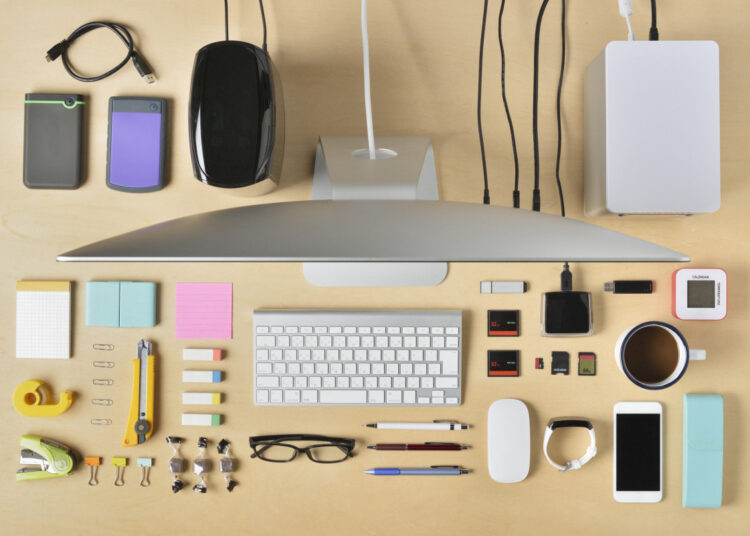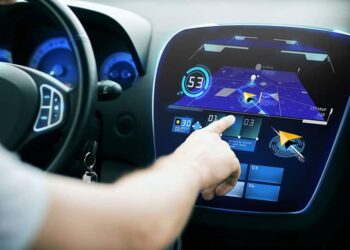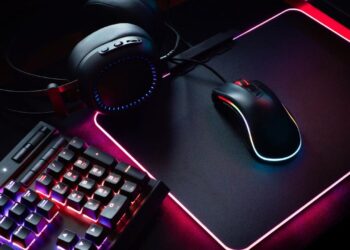The global shift towards remote work has transformed the traditional office into a dynamic, personalized workspace—often situated right in our homes. This revolution has made Work From Home’s Best Buys not just a luxury, but a necessity for maintaining productivity, fostering collaboration, and ensuring well-being in a distributed environment. Beyond a stable internet connection, the right productivity gear is paramount for creating an efficient, comfortable, and sustainable home office. This comprehensive exploration delves into the cutting-edge tools and technologies that are redefining the remote work experience, examining how these essential instruments are not merely enhancing individual output but actively shaping modern work culture, optimizing virtual collaboration, and supporting mental and physical health in a flexible work setting. We’ll unpack the intricate details of these powerful solutions, understanding their current impact, and their boundless potential to unlock previously unimaginable possibilities for a truly integrated and effective remote professional life.
Computing and Connectivity Essentials
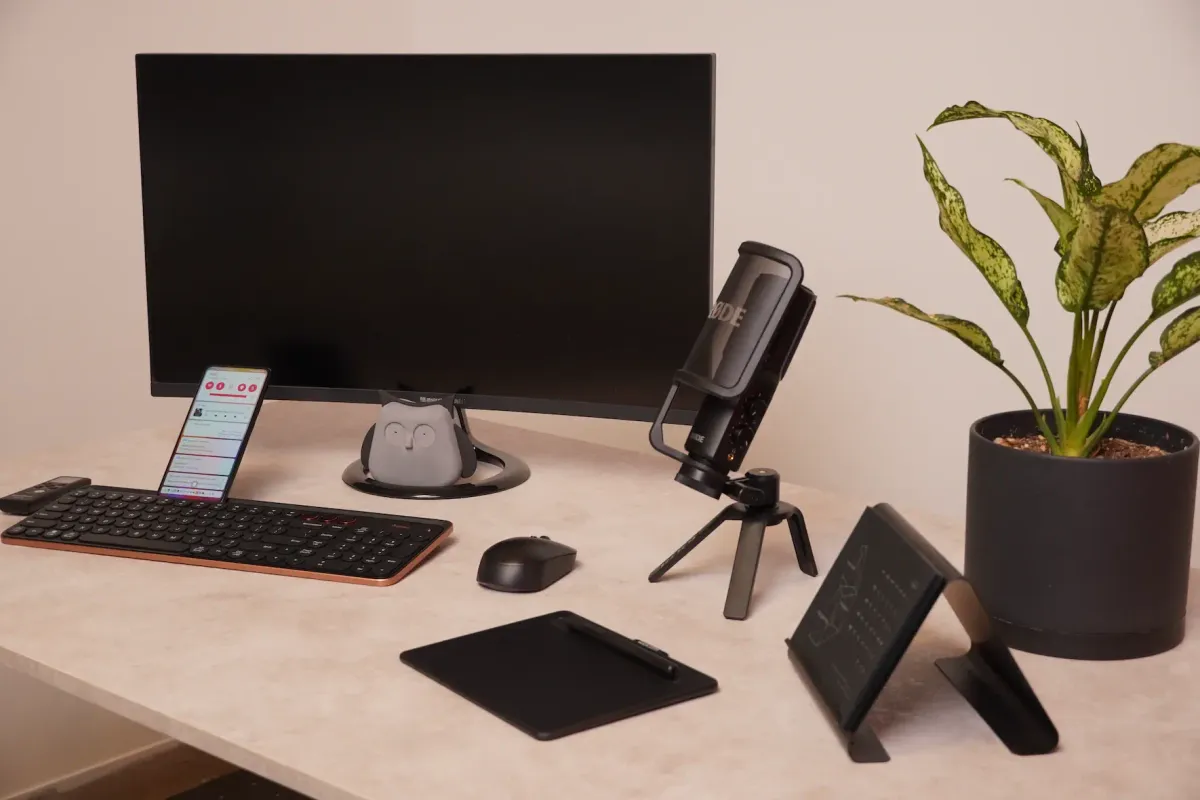
At the core of any productive home office lies a robust computing setup and reliable, high-speed internet connectivity, ensuring seamless workflow and communication. Without these fundamental elements, even the most advanced peripherals can’t fully deliver.
A. High-Performance Laptops and Desktops: The choice of your primary computing device is fundamental, acting as the brain of your home office. High-performance laptops (like Apple’s MacBook Pro with M-series chips, Dell’s XPS lineup, HP’s Spectre series, or Lenovo’s ThinkPad X1) offer powerful multi-core processors (such as the latest Intel Core Ultra, Apple M-series, or AMD Ryzen processors), ample RAM (16GB or more is highly recommended for smooth multitasking), and fast Solid-State Drive (SSD) storage. These specifications ensure your machine can handle demanding applications like high-resolution video conferencing, complex data analysis spreadsheets, graphic design software, and intensive coding environments, all while managing power efficiently to provide extended battery life for flexible work locations within your home. For users demanding the absolute maximum in raw computational power, expandability, and superior thermal management for continuous heavy loads (e.g., 4K video rendering, 3D modeling, large-scale software compilation), a dedicated desktop PC (often custom-built or professional workstations like Dell Precision or HP Z series) provides unparalleled performance. Desktops offer greater upgradeability and often come with a more competitive price-to-performance ratio, making them ideal for professionals whose work is intensely resource-intensive and primarily performed from a fixed location.
B. Reliable High-Speed Internet and Mesh Wi-Fi: A stable, fast internet connection is the undeniable lifeline of remote work. Investing in the highest speed available from your internet service provider (ISP) is crucial; fiber optic connections are ideal where available due to their symmetrical upload and download speeds and superior reliability. This ensures smooth, uninterrupted video calls, rapid large file transfers, and responsive access to cloud-based applications. To eliminate frustrating “dead zones” within your home, especially in larger houses or older buildings with structural interferences, a mesh Wi-Fi system (such as Eero, Google Nest Wifi, or Netgear Orbi) is a must-buy. Mesh systems deploy multiple interconnected nodes or satellites strategically around your home, creating a single, seamless, and strong Wi-Fi network that adapts to your environment. This provides consistent signal strength and automatically routes traffic efficiently, preventing annoying call drops or agonizingly slow loading times, ensuring robust connectivity for all your smart devices and preventing productivity bottlenecks.
C. Webcams and Professional Microphones: While most laptops come with integrated webcams and microphones, upgrading these components is one of the most impactful investments you can make for professional virtual interactions. A dedicated webcam (like the Logitech C920 series, Razer Kiyo Pro, or the innovative Insta360 Link) offers significantly superior video quality (typically 1080p or 4K resolution), better low-light performance, and often a wider field of view, presenting a clearer, more professional, and engaging image of yourself during virtual meetings. Equally important is a professional microphone (e.g., the Blue Yeti or Rode NT-USB Mini for simple USB plug-and-play convenience; or the Rode NT1 or Shure MV7 for those seeking studio-grade clarity with XLR or USB versatility). A good external microphone dramatically improves audio clarity, effectively reducing distracting background noise and ensuring your voice is heard crisply and clearly. This enhancement in audio quality elevates your presence and professionalism in every virtual meeting, fostering better communication and collaboration.
D. Essential Peripherals: External Monitor, Ergonomic Keyboard, and Precision Mouse: Optimizing your workspace for both ergonomics and efficiency demands thoughtful selection of peripherals. A large external monitor (a 27-inch model or larger, with 1440p or 4K resolution) significantly expands your screen real estate. This allows for more productive multitasking, enabling you to view multiple applications side-by-side without constant tab switching, which is far more efficient than relying solely on a single laptop screen. A comfortable and responsive external keyboard (whether a mechanical keyboard for tactile feedback, an ergonomic split keyboard for wrist health, or a silent membrane keyboard for quiet environments) and a precise, ergonomic mouse (like a vertical mouse or a trackball to reduce wrist strain) are crucial. These peripherals are vital for long hours of typing, navigating, and intricate work, actively preventing fatigue and reducing the risk of repetitive strain injuries often associated with prolonged laptop use. Together, these essential peripherals enhance comfort, improve workflow, and form the bedrock of an efficient and healthy home office setup.
Ergonomics and Environment
A truly productive home office isn’t just about the technology you use; it’s profoundly influenced by the physical environment you create. Investing in ergonomic comfort and an inspiring atmosphere supports long hours of focused work and overall well-being.
A. Ergonomic Office Chair and Adjustable Standing Desk: These two items are arguably the most crucial long-term investments for your health and sustained productivity in a remote work setting. An ergonomic office chair (renowned brands include Herman Miller’s Aeron, Steelcase’s Gesture, or even specialized options like Secretlab’s Titan for work/gaming hybrids) provides proper lumbar support, extensive adjustability for seat height, depth, armrests, and recline, actively encouraging good posture. This helps prevent debilitating back pain, neck strain, and general discomfort that can arise from prolonged sitting. Complementing this, an adjustable standing desk allows you to seamlessly switch between sitting and standing positions throughout your workday. This dynamic approach improves circulation, significantly reduces the amount of time spent sedentary, and can boost energy levels, which directly translates to enhanced focus, reduced fatigue, and improved overall well-being. Many modern adjustable desks offer electric motors for effortless height changes and programmable memory presets for your preferred positions.
B. Task Lighting and Natural Light Optimization: Proper lighting is essential for reducing eye strain, enhancing focus, and maintaining alertness. A good task light (such as an adjustable LED desk lamp with customizable brightness and color temperature, or a monitor-mounted light bar like the BenQ ScreenBar) effectively illuminates your immediate workspace without creating harsh glare on your screen. Crucially, optimizing natural light by positioning your desk near a window can dramatically boost mood, energy levels, and productivity due to exposure to daylight. However, managing excessive glare or direct sunlight with blinds, curtains, or strategically placed desk orientation is equally important to prevent discomfort and reflections on your monitor. Strategic lighting design creates a comfortable visual environment, minimizing visual fatigue during extended work sessions and helping to regulate your circadian rhythm.
C. Noise-Canceling Headphones: In a bustling home environment—whether it’s due to family activity, pets, or external sounds from neighbors or traffic—noise-canceling headphones (like the Sony WH-1000XM5, Bose QuietComfort Ultra, or Apple AirPods Max) are invaluable. They utilize advanced active noise cancellation (ANC) technology to effectively block out distracting ambient noise, allowing you to achieve deep focus during demanding work tasks and ensuring crystal-clear audio during virtual calls. Many high-end models also feature excellent built-in microphones with advanced noise reduction for communication. These headphones create a personal oasis of quiet, essential for maintaining concentration and productivity in shared living spaces or noisy urban environments, significantly improving call clarity for both you and your interlocutors.
D. Workspace Organization and Clutter Management: A tidy and organized workspace is scientifically proven to promote a clear mind and reduce stress. Investing in effective workspace organization solutions can transform your desk. This includes cable management clips, sleeves, or boxes to hide unsightly wires, monitor risers (often with integrated drawers) to elevate your screen to an ergonomic height while providing storage, desk organizers for pens, notebooks, and small items, and shelving units for documents or reference materials. A clean and uncluttered environment reduces visual distractions, simplifies finding essential items, and creates a more professional, calming, and efficient atmosphere, contributing significantly to mental clarity and overall productivity. It turns your workspace from a source of chaos into a beacon of calm.
E. Greenery, Air Purifiers, and Air Quality Monitors: Integrating indoor plants not only enhances the aesthetics of your home office but also provides tangible benefits for well-being. Plants can improve air quality by absorbing toxins and releasing oxygen, boost mood, and even enhance focus. For a more scientific approach to environmental well-being, a dedicated air purifier (with HEPA filters for allergens and activated carbon for odors) can significantly improve the air quality, especially in urban environments. Pairing this with an air quality monitor that tracks levels of common indoor pollutants (e.g., volatile organic compounds or VOCs, PM2.5 particulates, CO2 levels) and humidity, can alert you to issues that might impact your health, concentration, and sleep quality. Ensuring good ventilation and healthy air actively contributes to your long-term comfort, cognitive performance, and overall health in your workspace.
Collaboration and Communication
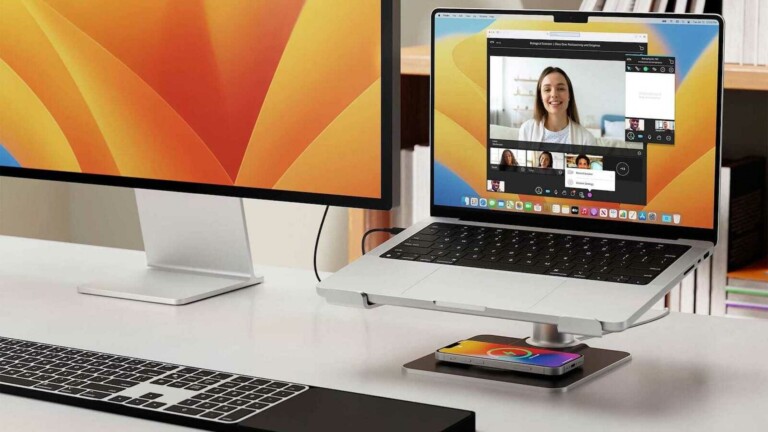
In the absence of physical proximity, the effectiveness of remote work hinges on robust collaboration and communication tools that replicate and even surpass traditional in-person interactions.
A. Unified Communications Platforms: Central to effective remote collaboration are Unified Communications (UC) platforms like Microsoft Teams, Slack, Google Meet, and Zoom. These comprehensive suites integrate multiple functionalities into a single interface, including high-definition video conferencing, instant messaging (chat), shared file repositories, and project management features. They enable seamless team communication, facilitate virtual meetings with advanced functionalities (such as screen sharing, interactive virtual whiteboards, breakout rooms for smaller group discussions, and transcription services), and support both synchronous (real-time) and asynchronous (at your own pace) collaboration. These platforms essentially act as the digital watercooler, meeting room, and project hub for distributed teams, fostering a sense of connection and efficiency.
B. Digital Whiteboards and Collaboration Displays: To effectively replicate the spontaneous brainstorming and visual problem-solving of a physical whiteboard session, digital whiteboards have become indispensable. Cloud-based platforms like Miro and Mural offer expansive online canvases where teams can collaborate in real-time, using virtual sticky notes, freehand drawings, diagrams, and templates. For a more tactile and immersive experience, dedicated collaboration displays (e.g., Microsoft Surface Hub, Google Jamboard) provide large, interactive touchscreens that combine high-quality video conferencing with integrated digital whiteboards. These devices allow remote teams to draw, annotate, share ideas, and brainstorm together as if they were in the same physical room, significantly enhancing creative problem-solving and ideation processes across geographical distances.
C. Project Management Software: Effective remote work relies heavily on clear organization, accountability, and task tracking. Project management software (such as Asana, Trello, Monday.com, ClickUp, or Jira for agile teams) allows teams to plan, execute, and monitor projects collaboratively. These tools enable users to assign tasks, set clear deadlines, track progress (often with Kanban boards or Gantt charts), and manage resources. They provide transparency across the team, ensure individual accountability, and keep everyone on the same page regardless of their physical location, streamlining complex workflows and preventing miscommunication or missed deadlines in distributed team environments.
D. Cloud Storage and Document Collaboration Tools: Seamless file sharing, version control, and real-time co-editing are critical for remote productivity. Cloud storage services (e.g., Google Drive, Microsoft OneDrive, Dropbox Business) offer secure, centralized repositories for documents, spreadsheets, presentations, and media files, accessible from any device with an internet connection. Integrated document collaboration tools (like Google Docs/Sheets/Slides, Microsoft 365, or Notion) allow multiple users to work on the same document simultaneously, with real-time updates, comment features, and comprehensive version history. This eliminates the need for cumbersome email attachments, prevents conflicting document versions, and ensures everyone is always working on the latest iteration, drastically improving efficiency for collaborative content creation.
E. Secure Remote Access Solutions (VPN, Zero Trust): For accessing company networks, internal resources, and sensitive data securely, Virtual Private Networks (VPNs) or more modern Zero Trust Network Access (ZTNA) solutions are essential. A VPN creates an encrypted tunnel over a public internet connection, routing your internet traffic through a secure company server. This protects data privacy and allows secure access to internal company resources as if you were in the office. ZTNA operates on the principle of “never trust, always verify,” granting granular access based on continuous verification of user identity and device health rather than network location. This provides a more robust and secure remote access framework, crucial for enterprise-level security in a distributed workforce, mitigating the risks associated with employees working outside the traditional office perimeter.
Health, Focus, and Personalization
The most effective home office setup also prioritizes the overall well-being of the remote worker, actively fostering focus, managing stress, and promoting a healthy work-life balance to prevent burnout.
A. Smart Lighting for Circadian Rhythm and Focus: Beyond basic task illumination, smart lighting systems (like Philips Hue or Nanoleaf) can be programmed to dynamically adjust their color temperature and brightness throughout the day. This technology mimics natural light cycles, starting with cooler, brighter light in the morning to promote alertness and gradually shifting to warmer, dimmer tones in the evening to prepare your body for rest. This supports your circadian rhythm, helping to maintain energy and focus during work hours and promote restful sleep afterwards. Specific light temperatures can also be chosen to enhance cognitive functions for demanding tasks or create a calming atmosphere for short breaks, actively contributing to your cognitive performance, mood regulation, and overall daily rhythm.
B. Wearables for Stress and Activity Monitoring: The same versatile wearables discussed earlier (smartwatches and smart rings) become indispensable tools for remote worker well-being. These devices can continuously monitor Heart Rate Variability (HRV), a key indicator of your body’s stress response and recovery status. They track activity levels, providing gentle nudges to encourage movement breaks throughout the day, combating the sedentary nature of desk work. Detailed sleep analysis ensures you’re getting adequate rest and can identify potential sleep disturbances. Companion apps provide personalized insights and actionable recommendations to manage stress, encourage hydration, and guide you towards maintaining a healthy lifestyle, actively supporting your physical and mental health.
C. Personalized Soundscapes and Focus Apps: To combat distractions inherent in a home environment and enhance concentration, personalized soundscapes apps (e.g., Endel, Brain.fm, or various white noise/ambient sound generators) create customized auditory environments. These generate ambient sounds or generative music specifically optimized for focus, relaxation, or sleep, helping to mask distracting noises and create a conducive auditory backdrop for deep work. Complementing this, focus apps (like Forest, Todoist with integrated Pomodoro timers, or Freedom for website blocking) use proven techniques like time boxing, website/app blocking, and task management to help users stay on track, minimize procrastination, and maintain long, uninterrupted “deep work” sessions, essential for complex cognitive tasks.
D. Compact Home Fitness Equipment: Integrating compact fitness equipment for home use is vital for staying active and counteracting the reduced physical activity that often comes with the absence of a commute. This could range from simple items like resistance bands, adjustable dumbbells, and yoga mats for quick stretch or strength breaks, to more significant investments like under-desk treadmills, mini pedal exercisers, or full-sized exercise bikes. For those with more space, an interactive smart gym system (like Peloton or Tonal) can bring a full workout experience directly into the home, providing structured routines and motivation, combating the sedentary nature of remote work and proactively supporting physical health.
E. Digital Well-being Tools and Time Management Apps: Managing the increasingly blurred lines between work and personal life is a significant challenge for remote workers, often leading to burnout. Digital well-being tools, often integrated into smartphone operating systems (e.g., iOS Screen Time, Android Digital Wellbeing), allow users to set app usage limits, schedule “downtime,” and manage notifications to prevent constant digital interruptions. Dedicated time management apps (e.g., RescueTime, Focus@Will) track application usage, block distracting websites, and provide insights into how time is spent, helping users identify time sinks and and make conscious choices about their digital habits. These tools are crucial for maintaining healthy boundaries, preventing burnout, and fostering a more balanced and sustainable work-life integration in a flexible work setting.
Conclusion
In conclusion, Work From Home’s Best Buys are more than just a list of recommended gadgets; they represent a strategic investment in productivity, well-being, and the long-term viability of flexible work arrangements. From the foundational computing and connectivity essentials to ergonomic workspaces, advanced collaboration platforms, and tools that support mental and physical health, these innovative solutions are proving indispensable for navigating the complexities of a distributed professional landscape. While challenges related to cybersecurity, equity, and work-life balance persist, the continuous evolution of remote work technology promises to unlock unprecedented levels of flexibility, efficiency, and personal empowerment, ultimately leading to a more adaptable, human-centric, and sustainable way of working. The home office is no longer a temporary makeshift; it’s a permanent and evolving fixture, continuously integrating the best technology has to offer for a thriving remote workforce.

